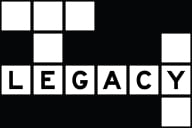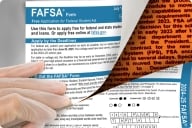You have /5 articles left.
Sign up for a free account or log in.

NASFAA interim president Beth Maglione took over amid a crisis over the Free Application for Federal Student Aid.
Amanda Maglione
Beth Maglione couldn’t have chosen a more fraught moment to take up the helm of the nation’s largest advocacy organization for financial aid professionals.
Named interim president of the National Association of Student Financial Aid Administrators in June, Maglione, who has been with the organization since 2008, assumed the top role at a time of heightened scrutiny of the financial aid system and historic disillusionment with the rising cost of college. She’s very aware of the challenges she faces.
“I’ve worked in this field for a really long time, and I can’t remember a time when our name was so aligned with what’s going on in the national conversation,” she said.
Last year’s bungled rollout of a new Free Application for Federal Student Aid threw the financial aid world into chaos, frustrating college enrollment planning and throwing up barriers to federal aid for the students who need it most. The administrators and staff Maglione represents saw their workloads multiply, and burnout in the sector is on the rise. In addition, students and families are more concerned than ever about the cost of college and the value of a degree, and financial aid offices often bear the brunt of those worries.
Maglione’s predecessor, Justin Draeger, testified at congressional hearings about the botched FAFSA rollout; NASFAA often served as a liaison between vexed aid offices and Education Department officials trying to clean up the mess. As the department prepares to enter a two-month testing period for this cycle’s federal aid form, NASFAA will once again be thrust into the role of financial aid watchdog, looking for early signs of delays and prepared to point out any technical missteps.
Maglione spoke with Inside Higher Ed about the state of student aid, the organization’s College Cost Transparency Initiative and her hopes—and fears—for this year’s FAFSA. The conversation, edited for length and clarity, is below.
Q: It’s been one year since the College Cost Transparency Initiative launched. What did you hope to achieve with it and how far have you come toward those goals?
A: As of today there are 618 schools signed up [to the commitment, up from 350 at its outset], and we estimate those schools are reaching over 6.3 million students. This is a community attempt to circle the wagons and do a little bit of self-policing among institutions, to make sure that they’re adhering to certain principles and standards. We are trying to make the whole process for students a lot more transparent, accessible and clear, using the same kind of language, making sure that institutions are providing aid offers that are comparable. Participating institutions’ aid offers are evaluated for that: they must mention the full cost of attendance and include very specific language about aid types and sources—grants, scholarships, loans, work-study—and whether or not those things need to be repaid. We have net price and renewability requirements, [clarifying] whether the financial aid being offered is one-time or on an ongoing basis.
We are really hopeful to get even more schools on board. This is voluntary and also different from any of the prior initiatives we have undertaken in this area, because it requires the sign-on of a broad swath of the institution beyond the aid office. We’ve got the presidential associations here with us. We’ve got folks from across the campus who are saying, “We commit to these values.” That’s what was missing before—collaboration and agreement across all those different groups.
Q: Why is this initiative so important for higher ed right now, in a moment of crisis of public trust in higher ed? And did the tumultuous past year hamper the initiative’s progress at all?
A: The initiative predates everything that went haywire this past year with the FAFSA. And we certainly had conversations about, do we press forward with this sort of year anniversary, given everything that’s happening to financial aid offices, all the stress that’s going on related to FAFSA and reporting deadlines? And it was deemed critical to move forward with this initiative, because the bungled FAFSA rollout is just chipping away at the trust that Americans have in the federal student financial aid system. And when folks feel that they have been baited and switched, that doesn’t benefit anybody. Obviously it’s very frustrating to the consumer, but that’s not what administrators want to see, either. They don’t want people coming in with confusion and chaos; their jobs are easier and they can get more to the work of counseling students through the right decisions if they’re able to come in with a baseline of knowledge. Clear financial aid offers benefit everybody in that regard.
Financial aid is not just a financial aid office issue anymore; it’s a campuswide issue.”
Q: Financial aid officers have a lot on their plates right now. How do you make the pitch to them, and to colleges, to commit to transparency on top of all that?
A: You’re definitely right that there’s a lot going on this year. But I do think there’s alignment between [financial aid offices’] needs and students’ needs here. First off, the review of the aid offers themselves doesn’t fall to the institution. In some cases they send it in and we say this looks great, or tweak a couple of things and then it will be perfect. So it’s not that heavy of a lift and that’s more common than us saying, “This needs a complete rewrite.”
But also, this issue that we kind of touched on earlier about the erosion of trust in the financial aid system, some of that is because folks have had a terrible time trying to apply for financial aid in the last 12 months. They may have something of a rough time this fall. We hope not; we’ve all got our fingers and toes crossed. But these things don’t go towards building public confidence. Giving students the ability to look at an aid offer and understand what they’re reading and be able to compare apples to apples is one step that could go towards rebuilding any broken trust between the public and the higher ed community.
Q: To that end, how do you balance NASFAA’s role in mitigating the burdens and concerns of the financial aid world with advancing the interests of students and families?
A: Again, I think that they align. Our members would like to have some of the regulatory burden relieved so that they can focus on doing what they can for students and families in a more direct manner. Things like [canceling] batch corrections [for last year’s FAFSAs], that’s a blow, because members had been waiting in good faith to do those corrections for the 2024–25 year and then learned at the 11th hour that it would not be available. These are the kind of things that, when that news comes across, means all eyes have to be on fixing that and fewer eyes on the things that we’d rather be doing, the direct one-to-one contact on campus.
There’s a weird inverse relationship where the more our field is regulated, the more members tell us they need NASFAA to stand in the void and help them better understand how to do their jobs. I want to be able to do what I can to protect the reputation of NASFAA as an organization and financial aid administrators as a profession and hand over the keys to whoever comes in next, hoping that the car is not too banged up. It’s a unique time to be an interim; there’s a heightened national conversation around all things financial aid. I’ve worked in this field for a really long time, and I can’t remember a time when our name was so aligned with what’s going on in the national conversation.
Q: NASFAA has released reports saying that financial aid staff are overburdened and offices are severely understaffed. What can colleges do better?
A: Something that I find kind of ironic is that for many years, NASFAA has fielded a staffing and salary survey, and this past year folks did not have time to fill out the staffing and salary survey. We got a much lower response rate because everyone has been so overworked.
At the same time, more and more financial aid providers are reaching up into the strategic enrollment management realm and having cross-campus discussions about where resources should be allocated. I also understand that colleges are under a lot of pressure and these are not easy discussions to have. How would an institution determine that its financial aid office was administratively capable? But they certainly should be. And I do think that financial aid administrators have an important voice in this discussion, and when they ask for resources it’s important that they be heard.
Perhaps if there is any positive outcome of the heightened conversation around very public snafus in the financial aid process, it is that financial aid is not just a financial aid office issue anymore; it’s a campuswide issue, and all things related to the administration of financial aid are campuswide issues.
Q: As we head into the testing period for this cycle’s FAFSA, what do you see as NASFAA’s role in holding the department to account?
A: I certainly think that’s going to be crucial. We’ve said this, but it’s going to be important to have transparent communication from our federal partners; that has come up again and again. I think some of the deep frustration that our members felt over the past 12 months has been 11th-hour announcements about things that we expected that were not delivered at that time; it was also sometimes couched in a way that felt very sunny when we absolutely knew it was not sunny information. Just give it to us straight and give it to us early. And we would prefer a communication that says, “This is an issue. We acknowledge the issue. We don’t have the answers yet, but we’re working on it.” That would be more preferable to us than no information.
I will say that looking at 2025–26 FAFSA, we seem to be doing a little better in that regard. The transparency around the fact that they’re testing, how it’s being tested, the plans for testing and how our members can get involved with testing—that has all been encouraging. We would just like to be in the loop on whatever good, bad or indifferent news is coming out, because no matter whether the news is good or bad, we will have to react to it. We stand in the void there between students and the system, and we want to be able to do that appropriately with enough notice.









